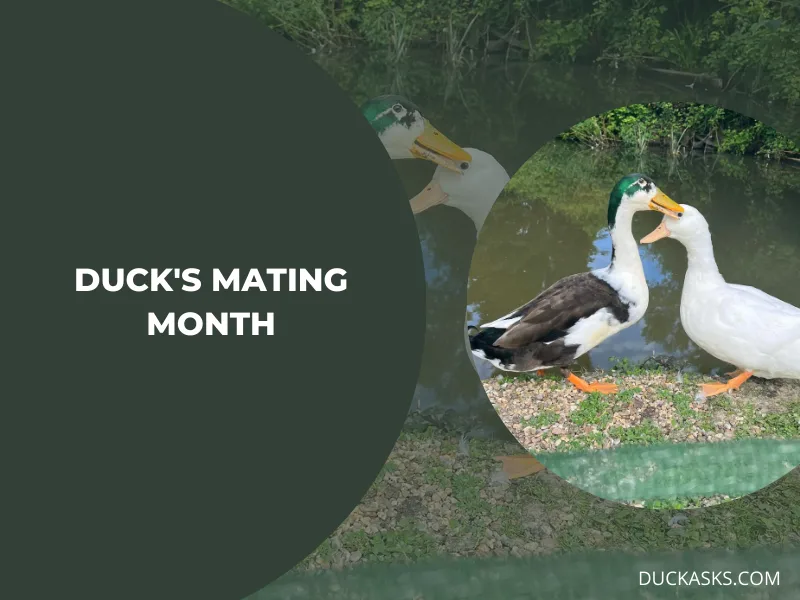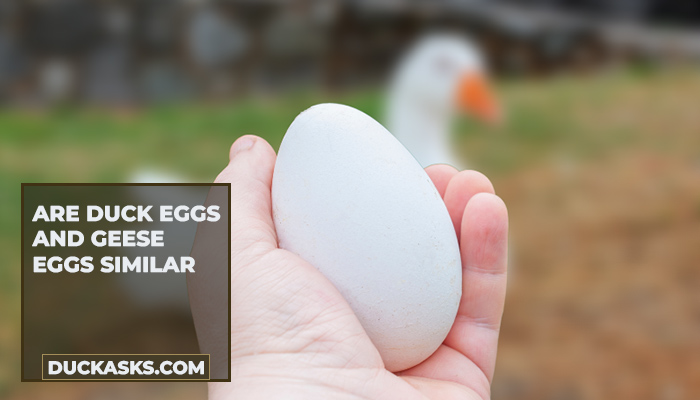When Do Ducks Start Mating?
Ducks are one of the most common farm birds out there. They are grown and regularly bred all year round.
So, it’s common to wonder when do ducks start mating to start breeding them as soon as possible. Usually, they are known to start mating when they are around 10-12 months old.
The mating conditions include sufficient food and water, a safe and comfortable living space, social interaction among the female and male ducks, proper daylight cycle, a warm environment, etc.
What Age Do Ducks Typically Begin Mating?
Ducks reach their sexual maturity when they are around 4-6 months old. Some may take even longer, such as 6-8 months, but it depends on the environmental factors.

However, most ducks don’t start mating until they are at least 10 months old. So, specifically, they will start breeding into the first year of their life after coming of age.
What Months Do Ducks Mate?
The mating season or months for ducks depends on what species of ducks we are talking about. Usually, it happens throughout the summer and spring.
This means they start the process of courting, selecting mates around early spring, and ending it in late summer with the hatching of the ducklings.

For most species, the breeding month is from August to May. However, it can start as early as August, depending on the other factors. Especially in areas with a warm climate, the mating ritual can start even at the end of winter.
So overall, from March to May is when ducks mate the most. But it can vary slightly depending on weather conditions, geographical location, availability of food and water, etc.
What Are the Conditions Ducks Need to Mate?
For ducks to mate healthily and naturally, several conditions come into play. If you are trying to breed them in captivity or even in the wild, these factors play a great role in motivating them to mate and produce healthy ducklings.
Let’s see in detail what are the conditions ducks need to perform successful mating activity.

01. Seasonal Conditions
Ducks are sensitive to seasonal conditions when it comes to breeding. So, they mostly mate when it’s the breeding season. For some domestic species, it may differ a bit, but the usual timeline is from spring to summer.
02. Comfortable Living Space
Whether in captivity or out in the wild, ducks need to feel safe and comfortable to initiate mating behavior. If you are keeping them in a coop, make sure there’s enough space to move around comfortably.
This includes both indoor and outdoor space. Usually, the thumb rule is to allocate 8 square feet of indoor space and 15 square feet of outdoor space for each pair.
The place should be clean and well-ventilated to prevent moisture and thus bacteria growth. Also, make sure the place is secure enough to protect them against common predators.
Not to mention, it should protect them from the cold, rain, and other adverse weather conditions as well.
03. Availability of Food
The availability of sufficient food is crucial for ducks to mate and produce healthy offspring.
Usually, they are not picky eaters and will eat about everything that’s available, from chicken feed, small bugs, insects, algae, etc. Protein-rich food is the most important during this time.
If you are feeding the ducks chicken feed, make sure to add a bit of niacin to it. Niacin is a nutrient that helps form strong bones for ducklings.
The females should also be provided with calcium-rich food to maintain their reproductive health and support healthy egg formation.
04. Availability of Water
Apart from drinking water, ducks like to spend a significant amount of time splashing and playing in the water. It helps to clean their body, nostrils, and eyes and keep them in a good mood.
A nice, clean pool of water also helps motivate them to mate with their partner.
So, it’s important that there is a lake, river, streams, ponds, etc. If there is no such source of water where you are raising them, invest in a small pool at the side of the outdoor area where they can swim comfortably.
05. Proper Nesting Site
Ducks need a nesting space to lay their eggs after mating. So, they tend to look for a suitable place to nest from the very first.
Usually, they collect dry straws, hay, and leaves, etc. to create nests. You can also use soft, dry shredded cloths so it’s extra comfy to sit and move around.
06. Temperature Condition
Ducks prefer warm weather to mate and breed. This is why they tend to like the spring and summer for their breeding season. But you can also artificially create such conditions by using lights and heaters.
The daylight hour should be longer than the night and the temperature should be around usual room temperature.
07. Male to Female Ratio
For ducks in captivity, the male-to-female ratio is a very important factor to look out for. Since male ducks are territorial and have a high sex drive, there should be enough female ducks to balance it out.
Usually, a ratio of 5 females to 1 male is the most common for breeding ducks.
Conclusion
In the wild, ducks are seen to mate naturally from late winter through all spring and to summer.
You can however, influence them to mate in other seasons as well by arranging artificial light and temperature to mimic the natural temperature and daylight conditions.
But make sure they have reached the age of sexual maturity and provide enough potential partners. Hopefully, this information has helped you understand the basic conditions you need to create to motivate your ducks to mate.






